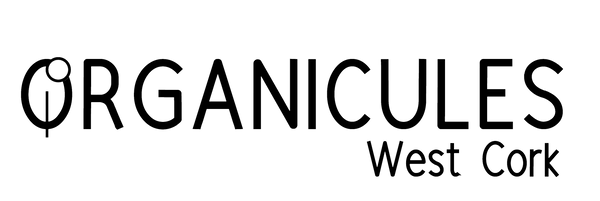Excluded Ingredients List
At Organicules' we work incredibly hard to ensure that our ingredients are derived from plant material (ie: suitable for vegans) and safe for both humans and the enviroments
During product development we adhere to EU standards and ensure that none of the 1,400 ingredients banned or restricted for use by the European Union are included in our products. However, we take things one step further and also conduct our own exhaustive search of the scientific literature to ensure that each ingredient is plant derived, biodegradable and we exclude additional ingredients which we believe may be of concern based on current scientific research.
As our brand grows and new products are developed and added to our collections, we expect that more ingredients will be added to our excluded ingredients list.
EXCLUDED INGREDIENTS LIST:
Aluminium
A silvery white metal frequently found in antiperspirants, used to plug sweat gland and prevent sweat getting to the skin surface. Read More..
Butylated Hydroxytoluene (BHT)
A synthetic antioxidants. Antioxidants prevent vegetable oils from going rancid and extend the shelf life of cosmetic products. We prefer to use natural tocopherols to protect our products.
Concerns:
Although BHT toxicity is still controversial, side effects have been shown, including endocrine disruptor, inducing reproductive damage and carcinogenicity [1,2,3]. Current legislation indicates a maximum concentration threshold. However, there is a potential cumulative effect due to the presence of BHT in a variety of consumer products, including rubber, foodstuff, cosmetics, plastics, mineral oil and fuel additives, pharmaceuticals, animal food and printing inks [4,2]. Thus there is no way to predict total exposure to this ingredient and we prefer to exclude it from our products.
References
1) Jiyeon Ham, Whasun Lim, kwang Youn Wang, Gwonhwa Song. Butylated hydroxytoluene induces dysregulation of calcium homeostasis and endoplasmic reticulum stress resulting in mouse Leydig cell death. Envoromental Pollution. Vol 256, January 2020, 113421.
2) Nieva-Echevarría, B.; Manzanos, M.J.; Goicoechea, E.; Guillén, M.D. 2,6-Di-Tert-Butyl-Hydroxytoluene and Its Metabolites in Foods. Compr. Rev. Food Sci. Food Saf. 2015, 14, 67–80
3) Liang, X.; Zhao, Y.; Liu, W.; Li, Z.; Souders II, C.L.; Martyniuk, C.J. Butylated hydroxytoluene induces hyperactivity and alters dopamine-related gene expression in larval zebrafish (Danio rerio). Environ. Pollut. 2020, 257, 113624.
4) Liu, R.; Mabury, S.A. Synthetic Phenolic Antioxidants and Transformation Products in Human Sera from United States Donors. Environ. Sci. Technol. Lett. 2018, 5, 419–423.
Parabens (methyl-, isobutyl-, propyl- and others)
Preservatives commonly used to prevent the growth of bacteria and mold. Parabens are endocrine (or hormone) disruptors, which may alter important hormone mechanisms in our bodies.
Phthalates (DBP, DEHP, DEP and others)
A class of plasticizing chemicals used to make products more pliable or to make fragrances stick to skin. Phthalates disrupt the endocrine system and may cause birth defects.
Sodium Lauryl Sulfate and Sodium Laureth Sulfate (SLS and SLES)
SLS and SLES are surfactants that can cause skin irritation or trigger allergies. SLES is often contaminated with 1,4-dioxane, a byproduct of a petrochemical process called ethoxylation, which is used to process other chemicals in order to make them less harsh.
Synthetic flavor or fragrance
Engineered fragrances or flavoring agents may contain any combination of up to 3,000-plus stock chemical ingredients, including hormone disruptors and allergens. Fragrance formulas are protected under federal law’s classification of trade secrets and do not need to be disclosed.
Triclosan
Antimicrobial agents toxic to the aquatic environment and linked to disruption of the human reproductive system.
